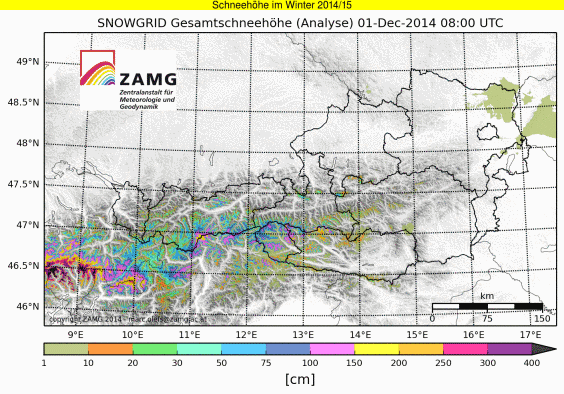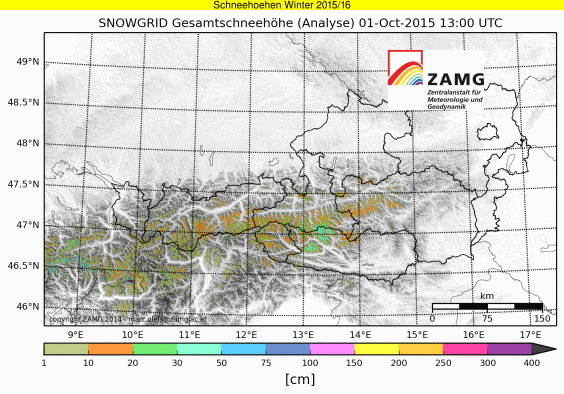Was ist SnowGrid?
SNOWGRID ist ein Schneedeckenmodell, also ein Programm, das anhand von gemessenen Daten zu Schnee und Wetter und den Gesetzen der Physik berechnet wie sich die Schneedecke verändert. Es gibt komplexe Modelle, die den Schichtaufbau der Schneedecke - inklusive Dichte, Schneetemperatur, Mikrostruktur der Schichten, usw. - für einen bestimmten Punkt genau wiedergeben. Das ist aber sehr rechenaufwendig und man braucht viele verschiedene Inputparameter, die nicht an allen Wetterstationen gemessen werden und daher nur für bestimmte Standorte zur Verfügung stehen.
SNOWGRID ist ein vergleichsweise simples Modell, das nur zwei Schichten kennt: die oberste, neueste und die Altschneedecke darunter. Dafür ist der Rechenaufwand deutlich geringer und man muss nicht so viele verschiedene Parameter messen. SNOWGRID kann daher flächig angewendet werden, beziehungsweise für so viele verschiedene Punkte, dass eine Karte entsteht.
Die SNOWGRID Domain (der abgedeckte räumliche Ausschnitt) umfasst ein Rechteck, das in etwa die Ausdehnung Zürich-Bratislava und Nürnberg-Triest umfasst, beziehungsweise circa 28 Millionen Datenpunkte. Die räumliche Auflösung beträgt damit 100m.
Hier geht es zu den PowderGuide SNOWGRID Karten: http://www.powderguide.com/wetter/snowgrid.html









